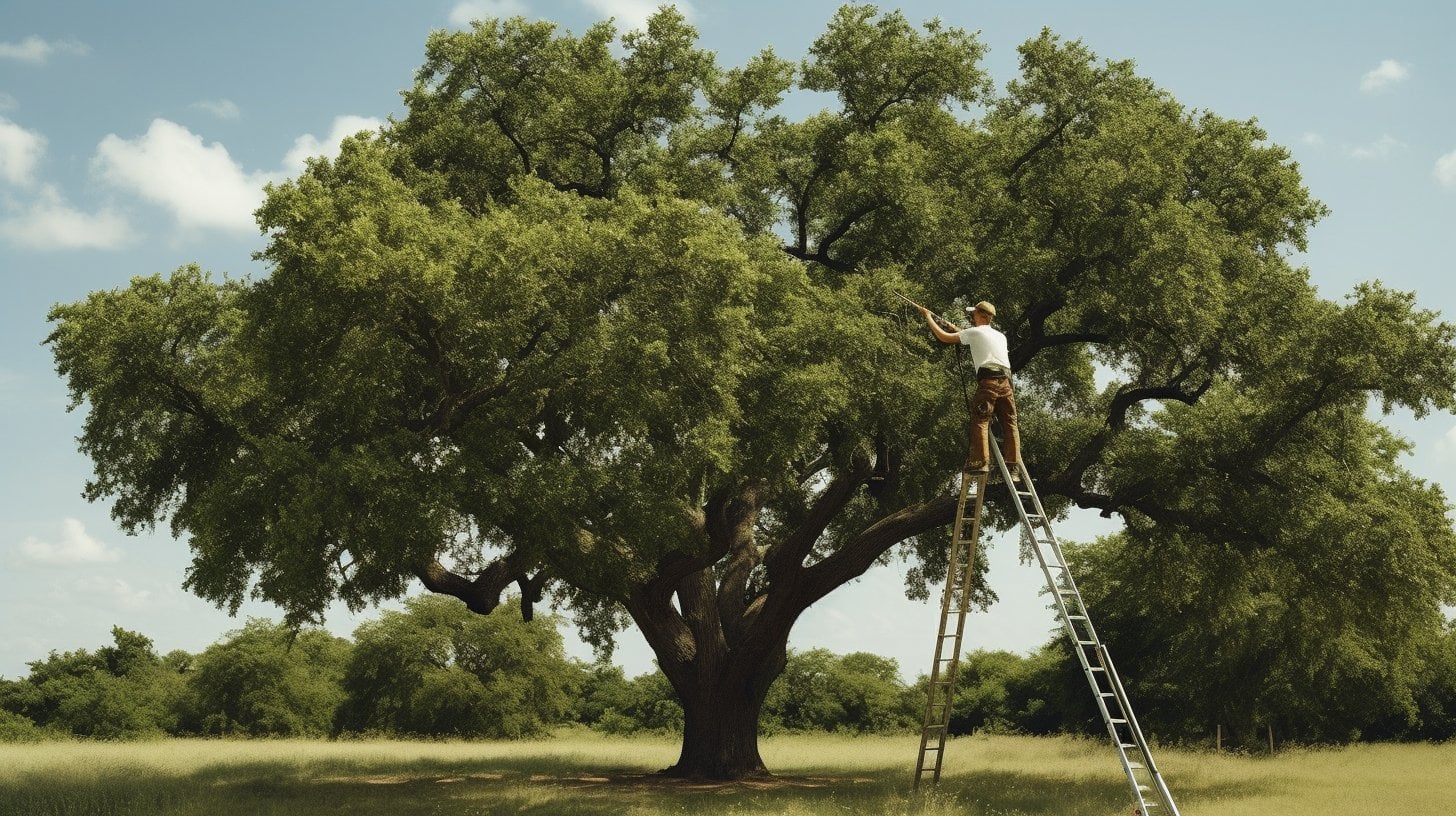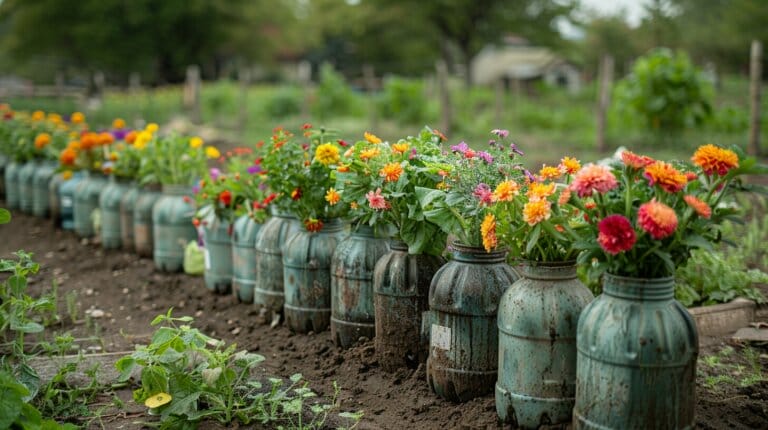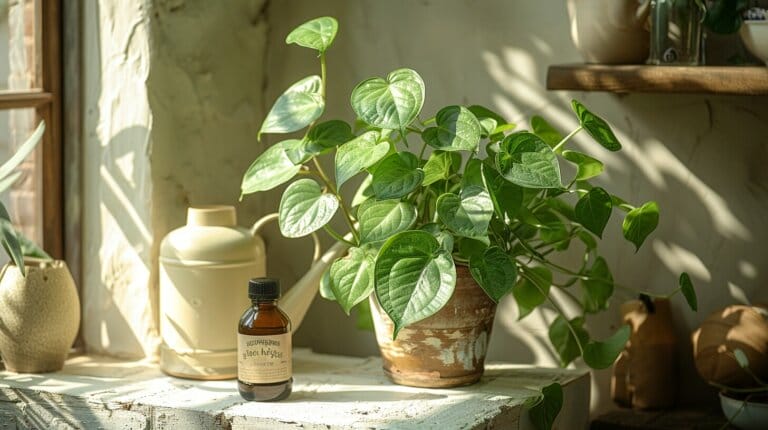How to Care for Pecan Tree: Essential Tips and Guide
I’ve spent many years dedicating myself to acquiring the necessary skills to correctly grow a pecan tree. This goes far beyond just planting and observing its growth; it truly involves comprehending its needs.
I’ll guide you through recognizing different pecan varieties, preparing your soil, nurturing your tree, and ensuring its long-term health.
With my help, you’ll look forward to a bountiful harvest. Let’s embark on this journey together because everyone deserves the joy of homegrown pecans.
Key Takeaways
- Understanding the different pecan tree varieties and their characteristics is crucial for selecting the right one for your region.
- Proper soil preparation, including testing pH levels and adding necessary amendments, is essential for successful pecan tree planting.
- Regular pruning, disease prevention, and pest control measures are essential for maintaining the health and productivity of pecan trees.
- Harvesting and post-harvest care, such as monitoring nut maturity, collecting fallen pecans quickly, and properly storing them, ensures the best quality and freshness.
Introduction to Pecans: Recognizing the Different Varieties
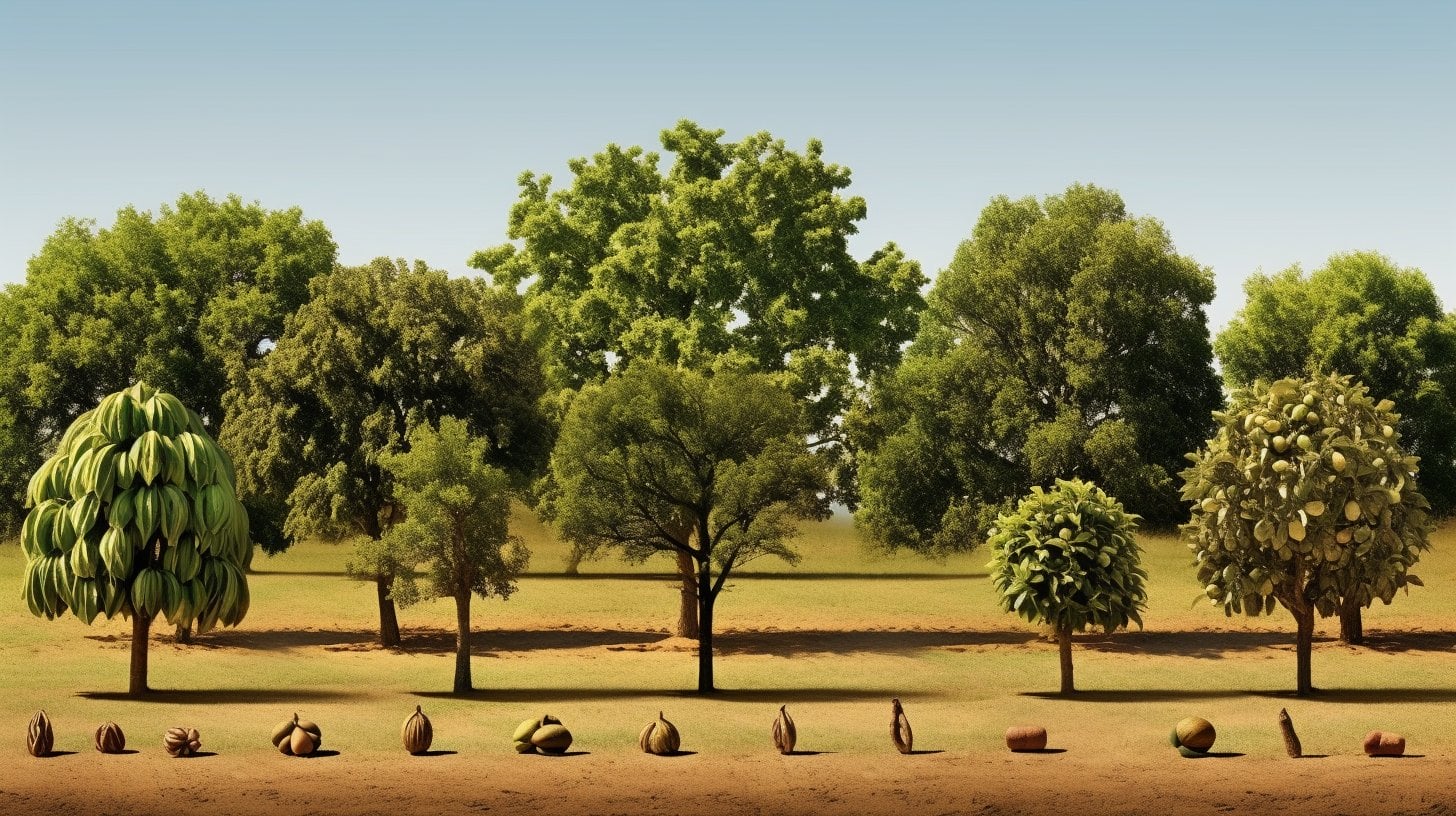
I’ve always been fascinated by the diversity of pecan varieties and how each offers its unique qualities.
It’s not just about finding the tastiest nut but understanding which tree would thrive best in your region.
Let’s delve deeper into recognizing these different pecan varieties and how to choose the best one for your gardening needs.
A Glimpse Into the Pecan Tree’s Unique Characteristics
It’s fascinating to see how the pecan tree stands out among other nut tree species with its vital, spreading branches and abundance of tasty nuts. As a deciduous tree, it shows unique characteristics that enhance its appeal and require specific care.
1. Deciduous Nature: Unlike evergreens, the pecan sheds its leaves annually, an adaptation allowing it to conserve water during dry seasons.
2. Productivity: These trees are known for their prolific nut production when well-maintained.
3. Resilience: Pecan trees are remarkably resilient, often weathering harsh conditions better than other trees.
4. Size: They’re large trees, towering trees, adding grandeur to any landscape.
Understanding these traits is critical for anyone looking to master pecan tree care. Each tree is a testament to nature’s ingenuity and adaptability.
Understanding the Distinct Types of Pecan Trees for Your Region
To choose the right type for my region, I’m learning about the distinct varieties of these sturdy nut producers. I’m discovering that the sorts of pecan trees are extensive, and each has unique traits.
I’ve delved into studying the varieties, understanding the nuances of pecan cultivars like ‘Desirable,’ ‘Stuart,’ and ‘Pawnee.’ I’ve found that some types of these trees, like ‘Cape Fear’ and ‘Caddo,’ are more disease-resistant and adaptable to different climates.
I’m also learning that a proper pecan nursery is vital, as the tree’s early stages are critical to its overall development. By gaining knowledge about these trees, I’m confident I’ll select the perfect variety for my region.
Choosing the Best Pecan Variety for Your Gardening Needs
After all this research, I’m ready to pick the best variety that suits my gardening needs. As a pecan grower, I’ve learned that not all varieties of these trees are the same. Here’s a list to summarize my findings:
1. Climate Suitability: Some pecan tree varieties thrive better in specific climates. I must consider my local weather conditions before deciding which type to plant.
2. Maturity Rate: The time it takes for a pecan tree to mature varies. I must choose a variety that aligns with my patience level.
3. Size: Mature pecan trees can be massive. I’ll need to ensure enough space to accommodate the tree’s growth.
4. Yield: Lastly, the pecan yield is critical because, after all, that’s why I’m planting a pecan tree.
These factors are crucial in making an informed decision.
Priming your Soil: Pecan Tree Planting Guidelines
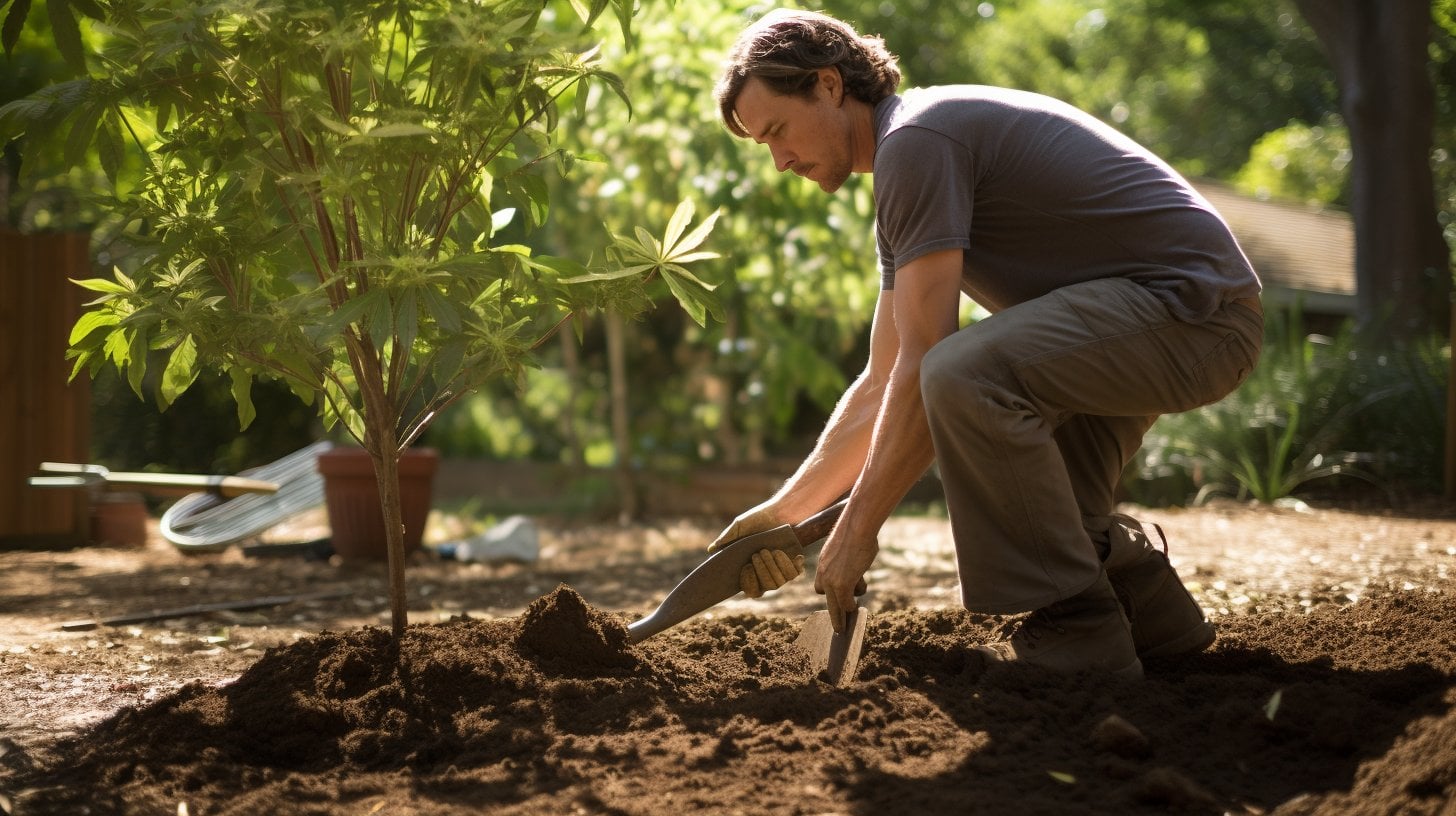
Now that we’ve covered the various types of pecans let’s move on to the crucial step of preparing your soil for pecan tree planting.
I can’t stress enough the importance of soil preparation and ensuring the right pH level for optimal growth.
Also, knowing the best time to grow your pecan tree can make all the difference.
Importance of Soil Preparation in Planting Pecan Trees
I can’t stress enough how vital proper soil preparation is when planting these trees. It’s the foundation of having a thriving pecan tree.
Here are the critical steps:
1. Test your soil: You want to ensure that your soil has the right pH level (slightly acidic to neutral) for planting pecan.
2. Amend the soil: Add necessary amendments to create an optimal growing environment based on your soil test results.
3. Choose the right tree: Bare root trees and container-grown pecan trees have different planting needs. Understand these before you plant.
4. Dig a proper hole: It should be twice as wide as the root ball and deep enough for the roots to spread.
Your pecan tree will be off to a great start with careful soil preparation.
Checking and Adjusting Soil pH Levels for Optimal Growth
I must check and adjust the soil’s pH levels to ensure optimal plant growth. Specifically, when caring for pecan trees, maintaining the soil pH levels between 6.0 and 6.5 is vital. If the pH is too low or too high, it can limit the tree’s ability to absorb essential nutrients.
I use a soil testing kit to gauge the acidity or alkalinity of my soil. If the pH is off, I’ll act swiftly to correct it. For too-acidic soil, I add lime; for overly alkaline soil, I apply sulfur. Adjusting soil pH levels is critical in my care for pecan trees.
With patience and precision, I can foster the optimal growth conditions for plant trees, ensuring a healthy and productive yield.
The Best Time to Plant Your Pecan Tree
After ensuring the soil’s pH is just right, let’s figure out the best time to put that seedling in the ground. As a point of mastery in tree planting, know that timing can significantly affect the success of your new pecan trees.
1. Late Winter: This is generally the best time to plant your pecan tree. The ground is soft enough for roots to establish before summer heat.
2. Early Spring: Early spring is your second best bet if winter is harsh.
3. Avoid Summer: The heat can stress your young tree.
4. Fall Planting: Only if you live in a mild climate where winters aren’t harsh.
In mastering care for a pecan tree, remember that timing is everything.
Nurturing a Young Pecan Tree: Essential Watering, Mulching, and Fertilization Tips

Once the pecan tree is planted, its welfare becomes my top priority. I’ve learned it’s not just about water but also the importance of mulching and timely fertilization.
Let’s delve into how I ensure my young tree gets the moisture it needs, the role of mulch in its care, and the best time for planting.
Watering Habits: Ensuring Your Young Tree Gets the Moisture it Needs
I’ve learned that frequent, deep watering is essential for a young pecan tree’s growth and health. As a gardener, you must ensure your tree gets the moisture it needs. Weekly providing 10 to 15 gallons of water is essential for the well-being of young trees. Correctly watering your tree is crucial, especially during its formative years.
Here are some tips:
1. Use a soaker hose around the tree to deliver water directly to its roots. This method avoids water loss due to evaporation.
2. Water deeply, not just the surface. This promotes root growth and resilience.
3. Don’t overwater. The soil should be moist, not soggy. Overwatering can lead to root rot.
4. Mulch to retain moisture. A layer of mulch around the tree can prevent the soil from drying out too quickly.
The Role of Mulch in Pecan Tree Care
Mulch plays a significant role in my gardening routine, especially when preserving moisture for my young plants. When I care for a pecan tree, mulch becomes my reliable companion. It aids in tree growth, ensuring a healthy tree by moderating soil temperature and reducing weed growth, and it can also fertilize.
Here’s a quick guide:
| Benefit | Description |
| Preserves Moisture | Mulch reduces water evaporation, keeping the soil moist for longer. |
| Regulates Temperature | It helps in maintaining a steady soil temperature, which is beneficial for root development. |
| Reduces Weeds | Mulch acts as a barrier, preventing weed growth. |
| Enhances Health | Gradual decomposition of mulch improves soil fertility, promoting a healthy pecan tree. |
The Best Time to Plant Your Pecan Tree
In my experience, it’s crucial to choose the right moment for planting, as the timing can significantly affect the growth and health of the sapling. When I plant pecan trees, I’ve found that there are four key factors to consider:
1. Best Time to Plant: Pecan planting should ideally occur between mid-March and mid-April. This gives the sapling ample time to establish itself before the summer heat.
2. Soil Temperature: Pecan trees need a soil temperature of at least 70 degrees Fahrenheit to germinate.
3. Proper Spacing: Pecan trees should be spaced at least 60 feet apart to ensure optimal growth.
4. Quantity: Always plant at least two pecan trees for cross-pollination.
Ensuring Long-Term Tree Health: Pruning Techniques and Disease Prevention
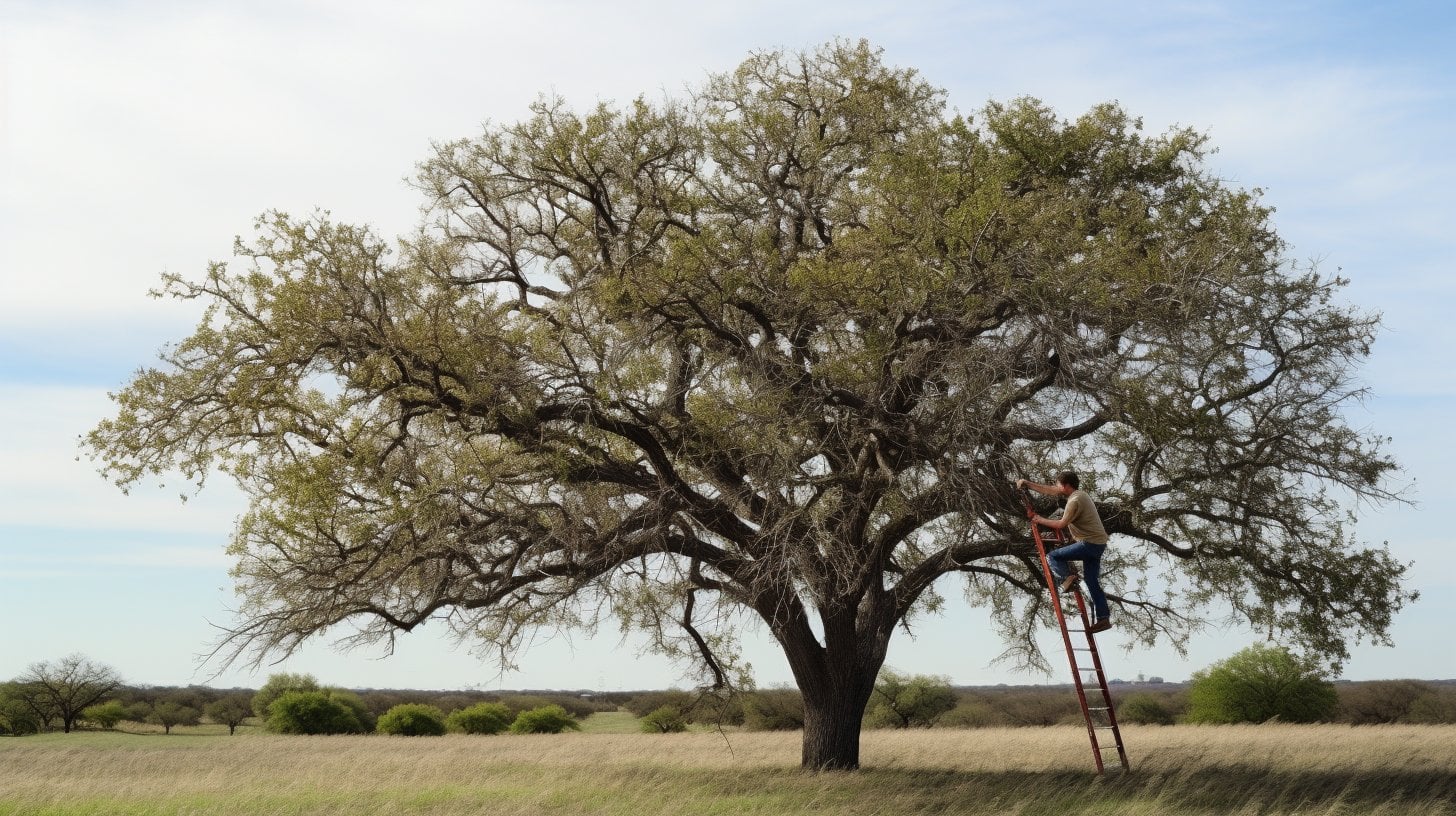
As my pecan tree matures, I must shift my focus to ensuring its long-term health. This means I’ll need to learn about proper pruning techniques and ways to prevent diseases.
Let’s dive into the details of successful pruning practices.
Next, we’ll explore common pecan tree diseases and their treatments.
Successful Pruning Practices for a Healthy Pecan Tree
I’ve found that understanding the correct pruning techniques is vital for maintaining a healthy tree. Here’s a quick guide I’ve put together showcasing successful pruning practices for a healthy pecan tree.
1. Young Pecan Tree: Prune the tree during its dormant season, focusing on removing lower branches to encourage growth upwards and outwards.
2. Mature Tree: Remove dead or diseased branches to allow more sunlight into the tree’s canopy, promoting the growth of healthy pecan nuts.
3. Regular Pruning: Don’t neglect this. Regular pruning helps in maintaining the overall health and productivity of the tree.
4. Safety: Always use sharp, clean tools and protect yourself with safety gear.
Discover the seamless experience of caring for your pecan tree with the best tools – find your perfect electric pruning saw.
Identifying and Treating Common Pecan Tree Diseases
Just like us humans, our leafy friends can fall sick, too, and I need to recognize and treat common diseases that could potentially harm them.
These trees are susceptible to various diseases, such as pecan scabs and infestations by the weevil. Identifying and treating these common tree diseases is crucial for the plant’s overall health.
Early detection of pecan scab, a fungal disease that causes black spots on the leaves and nuts, allows timely treatment and prevents further spread.
On the other hand, a weevil infestation requires a careful evaluation of the tree and soil to identify and eradicate these pests. It’s a complex task, but mastering these skills is rewarding and essential for any pecan tree caregiver.
Pests in Pecan Orchards and Prevention Methods
In my orchard, I’m constantly looking for pests that could potentially harm the health and productivity of my nut-bearing plants. Pecan trees are known to require careful tending, and pests in orchards can pose a significant threat.
To grow pecan trees successfully, you must be aware of the common pests and the prevention methods. Here’s a list of the top four:
1. Aphids: Known for causing yellowing leaves. Use insecticidal soap or neem oil to control them.
2. Pecan Weevils: They can stunt the growth of your trees. Regularly check for adults and apply insecticides.
3. Pecan Scab: Caused by a fungus, it can be controlled with fungicides.
4. Hickory Shuckworms: They impact the pecan trees produce. Use pheromone traps to monitor and control them.
Can I Use the Same Care Techniques for My Zebra Plant and Pecan Tree?
When it comes to zebra plant care tips, it’s important to note that each plant species has its own unique needs. While both the zebra plant and pecan tree require proper care, their techniques differ greatly. Understanding the specific requirements of each plant will help you maintain their health and promote their growth effectively.
Looking Forward: Ensuring a Bountiful Pecan Harvest
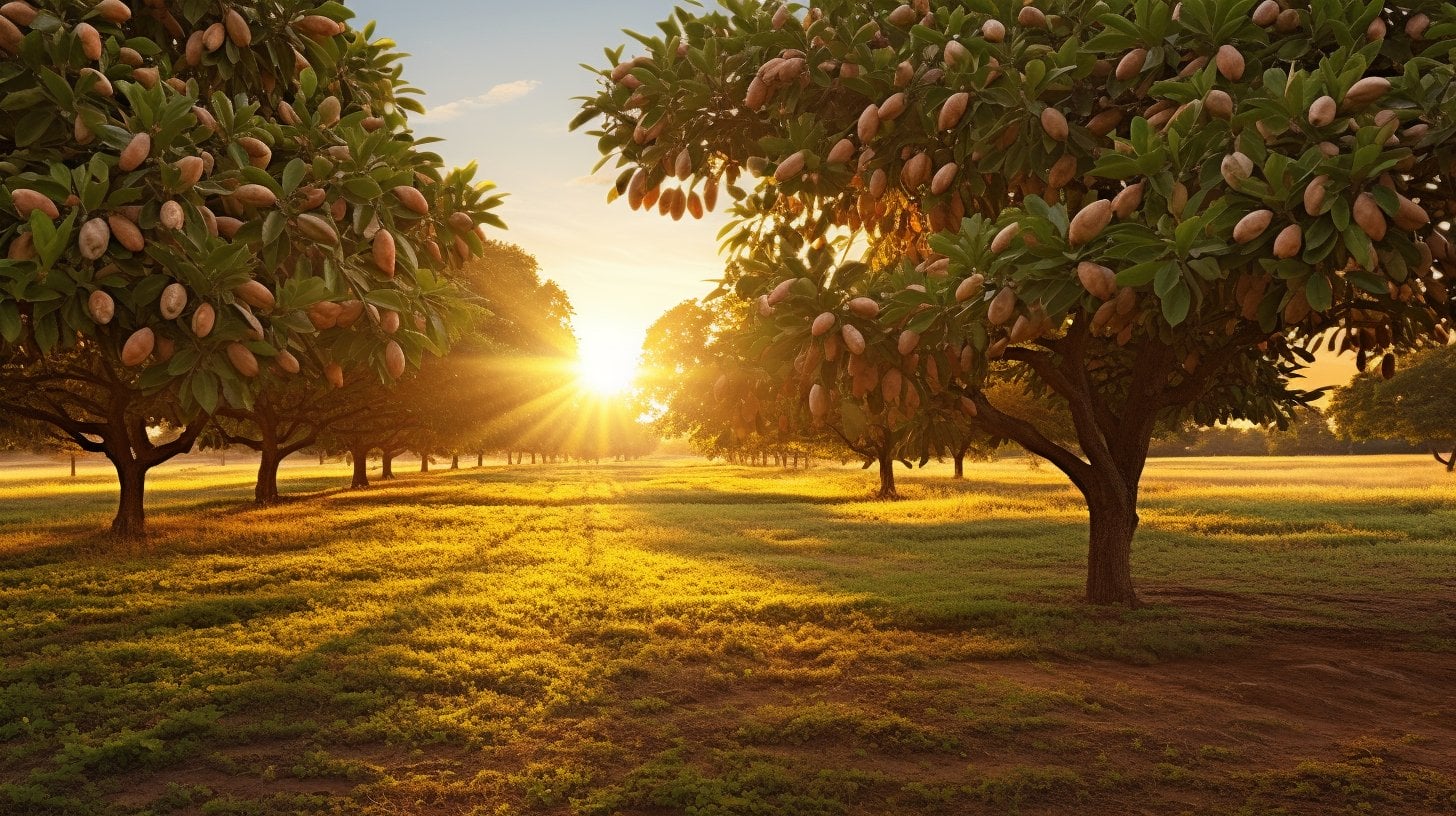
Now that we’ve covered how to care for a pecan tree let’s turn our attention to the next big step – ensuring a bountiful harvest.
I’ll share my insights into when and how to harvest pecans for the best quality, along with some nifty tricks to store these tasty morsels and keep them fresh.
And don’t worry, we’re not forgetting about future seasons, as I’ll also delve into the all-important post-harvest care.
When and How to Harvest Pecans for Best Quality
I’ll share some tips on when and how to harvest pecans to ensure the best quality.
Cultivating and nurturing a pecan tree is just the first half of the journey. If you grow these trees, knowing when and how to harvest them is crucial for optimal production.
1. Monitor the Nuts: When the outer shell starts to split, it’s harvest time.
2. Shake the Tree: A good shake will cause ripe pecans to fall.
3. Collect Quickly: To maintain the best quality, gather fallen pecans as soon as possible.
4. Cure Properly: Store pecans in a cool, dry place to cure for several weeks.
Simple Steps to Store Pecans and Keep Them Fresh
After you’ve gathered them, properly storing your nuts is essential to keep them fresh and tasty.
As a proud owner of one pecan tree, I’ve learned that the tree needs specific growing conditions to yield a bountiful harvest. A long growing season is key.
Once I’ve harvested the nuts, I know they need care too. I make sure to dry the nuts slowly for two weeks. This prevents mold and keeps the nut’s natural oils from turning rancid.
Then, I store them in airtight containers in a cool, dark place. If you’ve got a freezer, that’s even better! The cooler temperature slows down the oil’s oxidation, preserving the nut’s flavor.
Next Season’s Care: Pecan Tree Maintenance Beyond the First Year
Looking beyond the first year, I must focus on ongoing maintenance to ensure my nut-bearing friend continues to thrive and produce.
Pecan trees may need extra care and a significant part of next season’s care. These tree maintenance, beyond the first year, involves a few key steps:
1. Fertilizing: Applying the right kind of fertilizer is vital. It should be done in late winter or early spring, just before the growing season begins.
2. Pruning: This helps to shape the tree and remove any dead or diseased wood.
3. Watering: During dry spells, it’s essential to water your tree thoroughly.
4. Monitoring: Keep an eye out for any signs of disease or pests and take immediate action if needed.
These steps ensure my bearing trees remain healthy and productive for years.
Frequently Asked Questions
What Is the Typical Lifespan of a Pecan Tree?
It’s important to note that when discussing the lifespan of a pecan tree, they’re long-lived. Typically, I’d expect a healthy tree to thrive for around 200 years if properly cared for.
Do Pecan Trees Attract Any Specific Types of Pests or Wildlife?
In my experience, these trees attract certain pests, notably the pecan weevil and hickory shuckworm. Wildlife like squirrels and birds are also attracted to trees for their delicious nuts.
Can Pecan Trees Withstand Harsh Weather Conditions Like Frost or Extreme Heat?
Indeed, pecan trees can endure both frost and extreme heat. They’re pretty resilient. However, prolonged exposure to these harsh conditions can stress the tree’s health and nut production. Regular care is key.
How Do You Propagate a Pecan Tree?
I’d graft a scion from a mature tree to a rootstock to propagate a pecan tree. I’d ensure the graft union is secure and well-sealed. It’s important to maintain steady moisture for the graft to succeed.
Can Pecan Trees Be Grown in Containers, or Do They Need to Be Planted in the Ground?
Yes, you can grow pecan trees in containers. However, they’ll eventually need larger space. I’d recommend transferring them to the ground when they’re about 3 feet tall for optimal growth and development.
Conclusion
Caring for a pecan tree may seem daunting, but it’s genuinely rewarding. From prepping the soil and nurturing young trees to pruning and disease prevention, every step is vital.
And when it’s harvest time, you’ll realize all the effort was worth it. So, don’t be discouraged; armed with these tips, you’re well-equipped to ensure your pecan tree thrives.
Remember, patience and consistency are key to a bountiful pecan harvest.

